The Centennial Hall (German: Jahrhunderthalle) was built in Wrocław when the city was part of the German Empire, during this period the city was called Breslau. The Centennial Hall was built in 1912-1913. It was built to commemorate the Battle of Leipzig. After Wrocław had become part of Poland according to the Potsdam Conference in 1945, the Centennial Hall was renamed Hala Ludowa (Peoples Hall). The Centennial Hall is considered a landmark in the history of reinforced concrete architecture. The dome of the hall was made of reinforced concrete, it was the largest dome built since the dome of the Pantheon in Rome eighteen centuries earlier and was also the largest dome in the world at the time of its construction. The dome of the Centennial Hall is 69 metres in diameter and is 42 metres high. The Centennial Hall is a recreation centre, in the past, it could accommodate 7000 people. After renovation in 2010, the hall can accommodate 10,000 people. The artificial pond in front of the Centennial Hall becomes a popular ice rink in winter. Nowadays, the Centennial Hall is called the Hala Stulecia, the Polish translation of the original name Hala Ludowa, the Hall of the People. The Centennial Hall in Wrocław gained the status as a UNESCO World Heritage in 2006.
www.werelderfgoedfotos.nl © Copyright World Heritage Photos
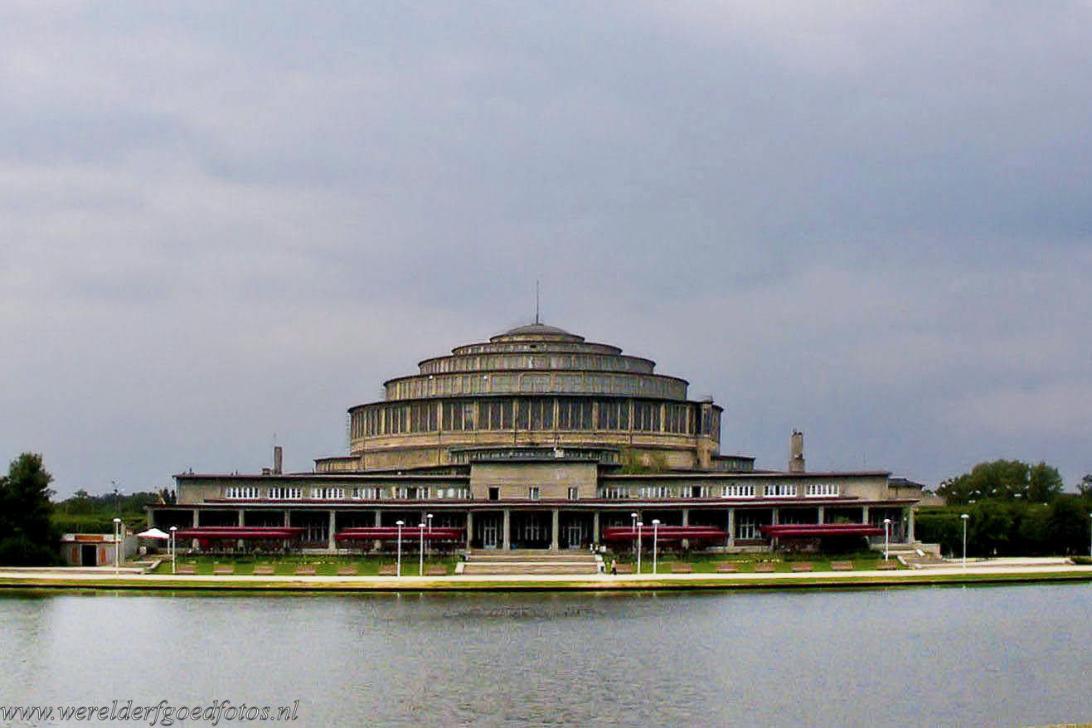
The Centennial Hall is situated in Wrocław, Poland. The dome of the Centennial Hall was made of reinforced concrete and was the largest dome in the world at the time of its construction in 1912-19130. The hall was built to commemorate the Battle of Leipzig, also known as the Battle of Nations, in 1813. The grounds include a monumental concrete pergola and a huge pond with a fountain, called the Multimedia Fountain. The pond in front of the hall becomes a popular ice rink in winter. The Centennial Hall in Wrocław was declared a UNESCO World Heritage.

The Centennial Hall is situated in Wrocław, Poland. The dome of the Centennial Hall was made of reinforced concrete and was the largest dome in the world at the time of its construction in 1912-19130. The hall was built to commemorate the Battle of Leipzig, also known as the Battle of Nations, in 1813. The grounds include a monumental concrete pergola and a huge pond with a fountain, called the Multimedia Fountain. The pond in front of the hall becomes a popular ice rink in winter. The Centennial Hall in Wrocław was declared a UNESCO World Heritage.
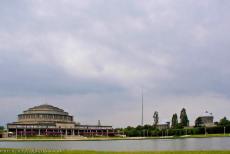
The 96 metres high needle-like metal sculpture Iglica towers high above the Centennial Hall in Wrocław. The sculpture was built in 1948 to celebrate the regaining control over the 'Regained Territories' after WWII. The Iglica was 106 metres tall, but the top 10 metres were removed after renovation. The Centennial Hall (German: Jahrhunderthalle) was built in Wrocław, when the city was a part of the German Empire. After Wrocław had become part of Poland, according to the Potsdam Conference in 1945, the Centennial Hall was renamed Hala Ludowa.
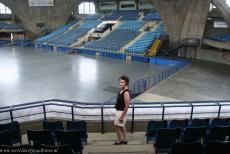
The Centennial Hall in Wrocław survived both the First and Second World Wars. The Centennial Hall is a recreation centre and could accommodate 7,000 people. After renovation in 2010, the hall now can accommodate 10,000 people. The Polish-born Pope John Paul II held services in the Centennial Hall during his visit in 1997. Nowadays, the Centennial Hall is called Hala Stulecia, the Polish word Stulecia means centennial. The translation of the original Polish name Hala Ludowa is Hall of the People. The Centennial Hall in Wrocław is a Polish UNESCO World Heritage Site.
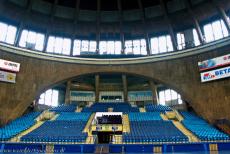
The central dome of the Centennial Hall in Wrocław. The Centennial Hall was designed by Max Berg, at that time the city architect of Wrocław. The dome of the Centennial Hall is 69 metres in diameter and has a height of 42 metres. The Centennial Hall was the largest of its kind in the world at the time of its construction, the dome was made of reinforced concrete. The main hall is surrounded by corridors. The hall became a key reference for the development of reinforced concrete buildings in the 20th century.
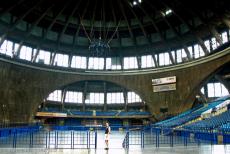
Centennial Hall in Wrocław: The dome of the hall was made of reinforced concrete and was the largest dome in the world at the time of its construction. It was also the largest dome built since the dome of the Pantheon in Rome eighteen centuries earlier. The dome was modeled after the Festhalle Frankfurt. The Centennial Hall was opened in 1913. The hall is considered a landmark in the history of reinforced concrete architecture. The spacious Centennial Hall is still in use for special events, cultural and sporting events, congresses and concerts.
